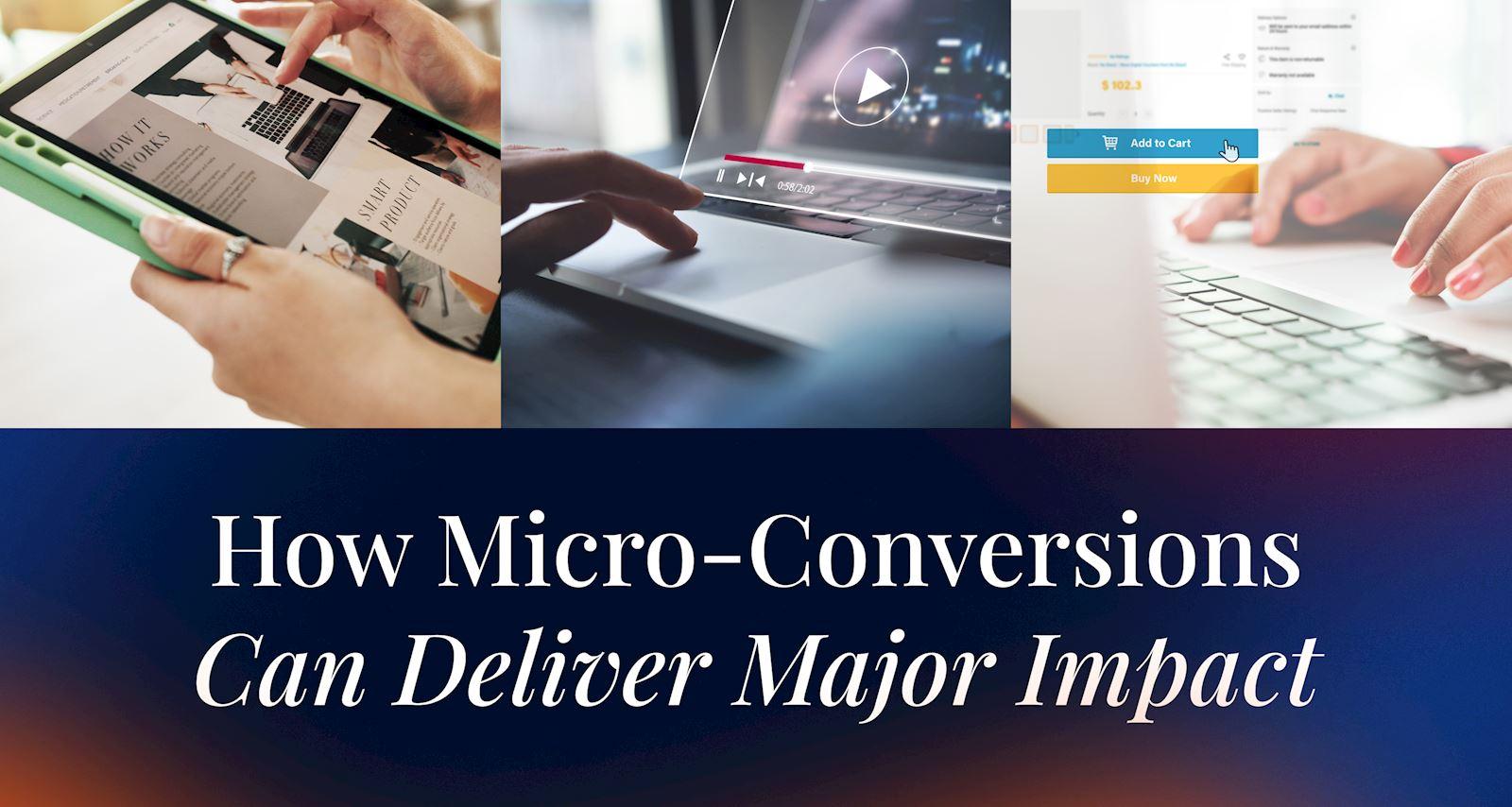The Power of Micro-Conversions in CRO Strategies
Published by Spinutech on February 10, 2025

Conversion Rate Optimization (CRO) programs often focus exclusively on macro-conversions.
It's time to think smaller.
That’s not to say that major actions like form fills, purchases, or sign-ups are unimportant. They are critical, but they don’t happen in isolation. Every completed goal is actually the result of a series of smaller steps known as micro-conversions. Ignoring these key interactions means missing opportunities to refine the user experience and drive more meaningful engagement.
By understanding and optimizing for micro-conversions, marketers can create a more holistic CRO strategy that moves users closer to major conversion points.
Why Micro-Conversions Matter
Testing and optimizing solely for the big-picture goals risks overlooking the full conversion journey. A visitor doesn’t go from landing on your site to purchasing instantly — there are critical steps in between that signal interest and intent. These small but significant actions provide valuable data about user behavior and friction points.
Micro-conversions act as early indicators of a user’s likelihood to convert. By improving them, brands can boost engagement, lower bounce rates, and ultimately drive more macro-conversions.
Micro-Conversions to Track and Optimize
Rather than focusing only on whether users convert, consider the steps they take leading up to a conversion. Key micro-conversions include:
- Scroll Depth: Are visitors scrolling far enough to see key content?
- Page Path: Are they navigating through the expected journey or dropping off early?
- Engagements with Interactive Elements: Are users watching videos, interacting with sliders, or reading testimonials?
- CTA Clicks: Are visitors clicking call-to-action buttons, even if they don’t immediately convert?
- Engagement Rate: Are users staying on the site long enough to explore?
Tracking and optimizing these behaviors helps visitors get to the right pages and engage with essential conversion elements like social proof, product options, and key information.
Optimizing Micro-Conversions in Digital Marketing for the Right Stage in the User Journey
Every page has its own role in the conversion journey, and micro-conversions should be optimized accordingly:
Homepage
The goal of a homepage isn’t immediate conversion. It’s to get users to the next page.
Micro-Conversions to Optimize:
- Clicking on a CTA
- Engaging with a video
- Navigating to another page to reduce bounce rate
Product Pages
Visitors should engage with key elements that build purchase confidence.
Micro-Conversions to Optimize:
- Scrolling 50% down the page
- Interacting with testimonials or key information modules
- Engaging with product quizzes
- Clicking on feature breakdowns
Cart and Checkout
Adding an item to the cart is a micro-conversion that signals strong purchase intent.
Micro-Conversions to Optimize:
- Viewing shipping details
- Engaging with a discount code field
- Interacting with customer support before purchasing
Small Tweaks, Big Impact
By optimizing micro-conversions at every stage, brands can significantly improve overall conversion rates. Instead of focusing only on end goals, consider the behaviors leading up to them—and how to make each step more seamless, engaging, and persuasive.
When micro-conversions improve, macro-conversions follow. The key to CRO success isn’t just testing for the finish line, but ensuring users are making progress toward it every step of the way.
If you’re ready to add micro-thinking to your macro-conversion goals, let's chat.